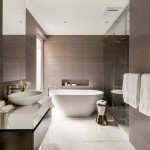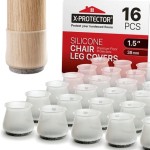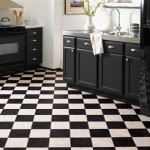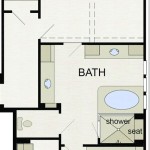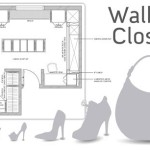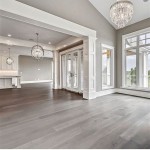Luxury Vinyl Plank Flooring: Replicating the Elegance of Stone
Luxury Vinyl Plank (LVP) flooring has emerged as a versatile and increasingly popular alternative to traditional flooring materials. Its ability to mimic the aesthetic of various natural materials, particularly stone, has contributed significantly to its widespread adoption. This article will delve into the characteristics of LVP flooring that replicates the look of stone, exploring its benefits, applications, and considerations for installation and maintenance.
The advancements in manufacturing technology have enabled LVP to achieve a remarkable level of realism in replicating the appearance of natural stone. High-resolution imagery is often employed in the printing process, capturing the intricate details of various stone types, including marble, slate, travertine, and granite. These details are then transferred onto the vinyl surface, creating a visual texture that closely resembles the real thing. Furthermore, embossing techniques are frequently used to create a tactile surface that further enhances the authenticity of the stone-like appearance.
LVP’s construction generally consists of several layers, each serving a specific function. A wear layer, typically made of a clear, durable material like urethane, protects the underlying design layer from scratches, stains, and fading. This wear layer is crucial for the longevity of the flooring, especially in high-traffic areas. Below the wear layer is the design layer, which contains the high-resolution image of the stone. This layer is responsible for the flooring's aesthetic appeal. Beneath the design layer are one or more core layers, providing structural stability and impact resistance. Finally, some LVP products include an attached underlayment, which provides cushioning and sound absorption.
Benefits of Choosing Stone-Look LVP
Several advantages contribute to the popularity of stone-look LVP over natural stone. One of the most significant is its cost-effectiveness. Natural stone flooring can be a substantial investment, considering both the material cost and the installation expenses. LVP, on the other hand, is generally much more affordable, making it an accessible option for a wider range of budgets. This cost-effectiveness extends beyond the initial purchase price, as LVP often has lower long-term maintenance costs compared to natural stone.
Durability is another key benefit. LVP is highly resistant to scratches, dents, and water damage, making it suitable for areas prone to moisture, such as bathrooms, kitchens, and basements. Natural stone, while beautiful, can be porous and susceptible to staining and water damage if not properly sealed and maintained. The robust construction of LVP allows it to withstand heavy foot traffic and resist wear and tear, ensuring its longevity and maintaining its aesthetic appeal for years to come.
Maintenance is significantly easier with LVP. Natural stone often requires specialized cleaning products and techniques to avoid damage or discoloration. LVP, however, can be easily cleaned with a damp mop and mild detergent. Its stain-resistant properties also make it easier to remove spills and stains, further simplifying the cleaning process. The ease of maintenance makes LVP a practical choice for busy households and commercial spaces.
Installation is also a factor favoring LVP. Many LVP products feature a click-lock system, which allows for easy and quick installation without the need for adhesives or specialized tools. This makes it a viable option for DIY homeowners. Natural stone installation, on the other hand, typically requires professional installers due to the weight and cutting requirements of the material. The simpler installation process of LVP can save time and money.
Comfort is another often overlooked advantage. Natural stone can be cold and hard underfoot, especially during colder months. LVP, however, tends to be warmer and more comfortable to walk on. The addition of an attached underlayment can further enhance the comfort level, providing cushioning and reducing noise transmission. This increased comfort makes LVP a more pleasant option for living spaces.
Applications of Stone-Look LVP
The versatility of stone-look LVP makes it suitable for a wide range of applications, both residential and commercial. In residential settings, it is commonly used in kitchens, bathrooms, living rooms, and bedrooms. Its water resistance makes it an ideal choice for areas prone to moisture, while its durability ensures it can withstand the demands of daily life. The aesthetic appeal of stone-look LVP can also enhance the overall décor of any room, adding a touch of elegance and sophistication.
In commercial settings, stone-look LVP is often used in retail stores, offices, restaurants, and healthcare facilities. Its durability and ease of maintenance make it a practical choice for high-traffic areas. The aesthetic flexibility of LVP also allows it to complement various design styles, creating a welcoming and visually appealing environment for customers and employees. Its resistance to stains and spills is particularly beneficial in environments where food and beverages are present.
Furthermore, stone-look LVP can be used in basements, which are often prone to moisture issues. Unlike natural stone, which can be susceptible to water damage, LVP is highly resistant to moisture, making it a suitable flooring option for below-grade spaces. It can also help to insulate the floor, making the basement more comfortable and energy-efficient.
The design possibilities with stone-look LVP are virtually limitless. It can be installed in a variety of patterns, such as a staggered or herringbone pattern, to create a unique and visually interesting floor. It can also be combined with other flooring materials, such as carpet or tile, to create a custom design that meets specific needs and preferences. The ability to customize the design allows homeowners and business owners to create a space that reflects their personal style and brand identity.
Considerations for Installation and Maintenance
While LVP is generally easy to install, proper preparation is essential for a successful installation. The subfloor must be clean, level, and dry before installing the LVP. Any imperfections in the subfloor can telegraph through the LVP, affecting its appearance and performance. If the subfloor is uneven, it may need to be leveled with a self-leveling compound. It is also important to remove any existing flooring or debris before installing the LVP.
When installing LVP with a click-lock system, it is important to follow the manufacturer's instructions carefully. The planks must be properly aligned and locked together to create a seamless and secure floor. Using a tapping block and rubber mallet can help to ensure that the planks are properly connected. It is also important to leave a small expansion gap around the perimeter of the room to allow for expansion and contraction due to temperature and humidity changes.
Regular cleaning is essential to maintain the appearance of stone-look LVP. Sweeping or vacuuming regularly can help to remove dirt and debris that can scratch or dull the surface of the flooring. Damp mopping with a mild detergent is recommended for removing spills and stains. Avoid using harsh chemicals or abrasive cleaners, as these can damage the wear layer of the LVP. It is also important to avoid using excessive water when mopping, as this can seep into the seams of the flooring and cause damage.
To protect the LVP from scratches and dents, it is recommended to use furniture pads under the legs of chairs and tables. Avoid dragging heavy objects across the floor, as this can cause scratches. Placing mats or rugs in high-traffic areas can also help to protect the flooring from wear and tear. By taking these preventative measures, the longevity and aesthetic appeal of the stone-look LVP can be prolonged.
In conclusion, luxury vinyl plank flooring that replicates the look of stone offers a compelling alternative to natural stone, providing a combination of aesthetic appeal, durability, cost-effectiveness, and ease of maintenance. Its versatility makes it suitable for a wide range of applications, and its relatively simple installation process makes it an accessible option for both homeowners and businesses. Careful consideration of the installation process and adherence to proper maintenance practices will ensure the long-term performance and beauty of this increasingly popular flooring option.

The Benefits Of Stone Look Vinyl Flooring In Salem Nh Messina S

Trecento Luxury Vinyl Tile Affordable Natural Stone Look

Welcoming Entryway And Foyer With Stone Look Luxury Vinyl Tile Flooring

I Recently Put In Stone Slate Look Luxury Vinyl Tiles My Bathroom

Mohawk Wanderer S Loop Stone Grey Lvp

Smartcore Half Moon Stone 12 Mil X In W 24 L Waterproof Glue Down Luxury Vinyl Tile Flooring 19 63 Sq Ft Carton At Lowes Com

Luxury Vinyl Planks And Tiles Featuring Hermosa Stone Photos

Stanton Natural Beauty Stone 16 Series Carrara Bianco Luxury Vinyl Plank Waterproof Lvp Flooring Scratch Stain Resistant Lvt

Vinyl Flooring That Looks Like Stone Hardwood Giant

Durable And Waterproof Vinyl Floors
